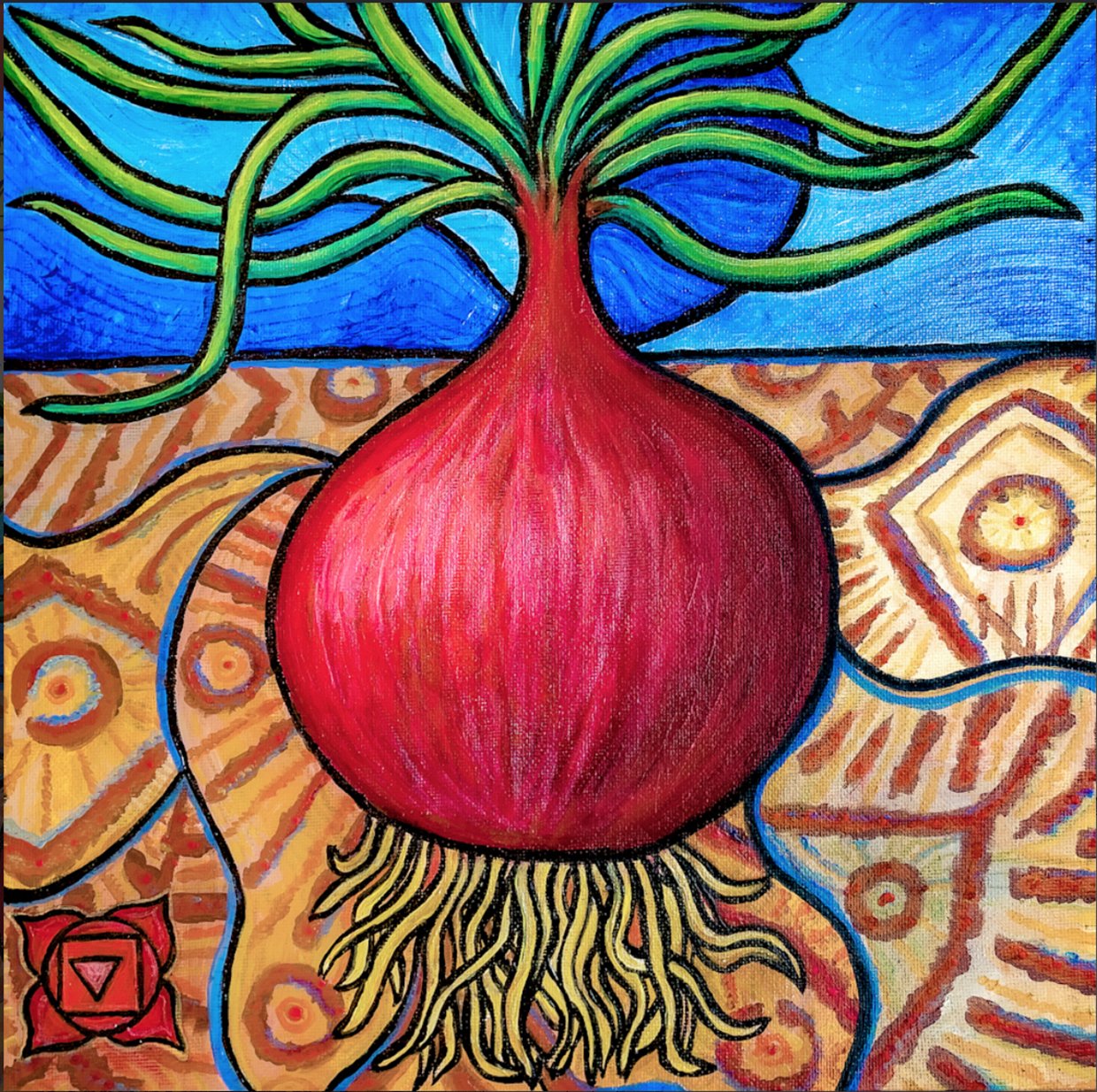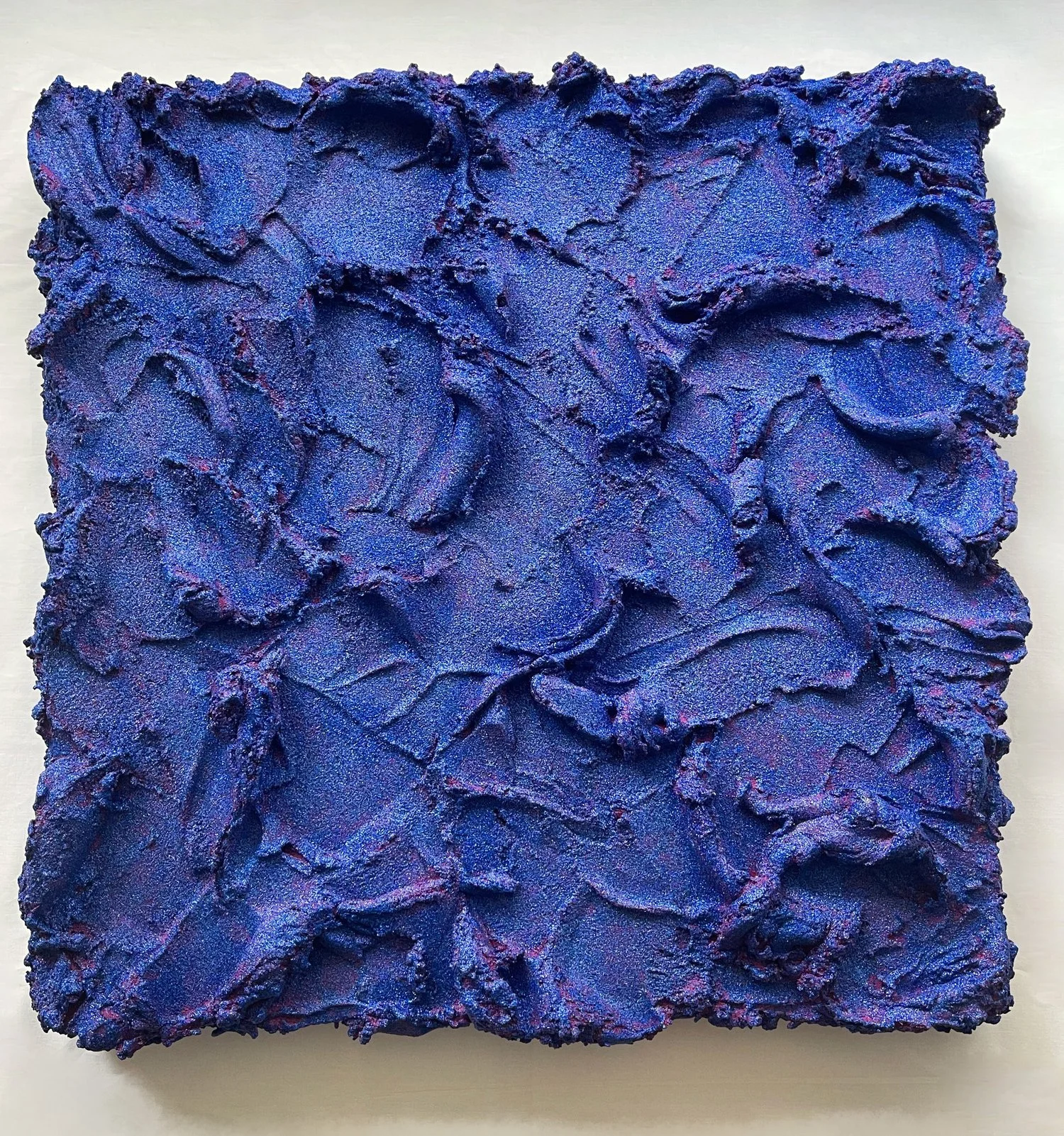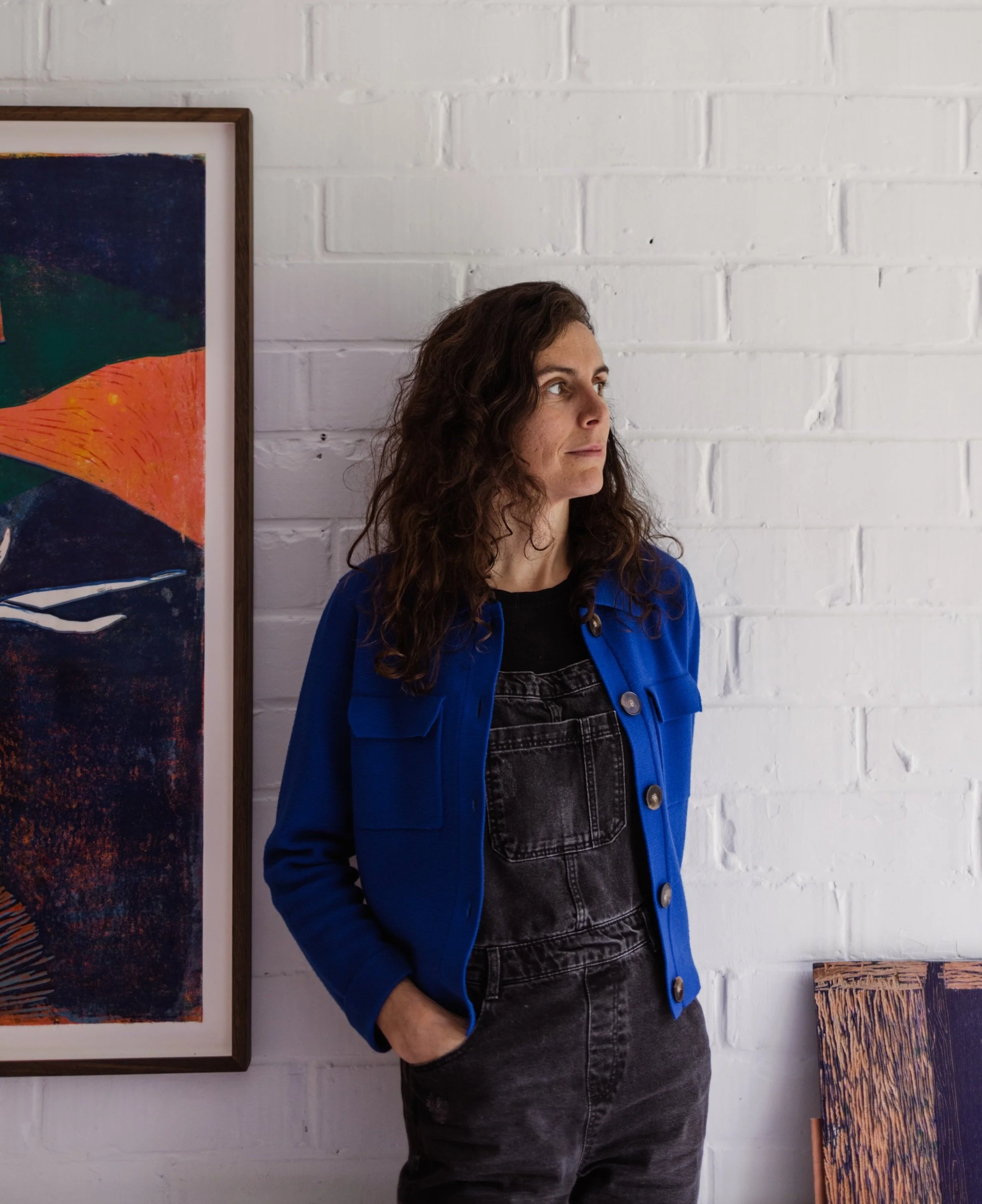10 Questions with Kristen Palana
Kristen Palana is an American/Portuguese multidisciplinary artist based in Malawi. After decades as a digital artist, she has reconnected with her fine art roots. Kristen's animated films have screened in over 75 international film festivals earning numerous "Best Animated Short Film" awards.
As an educator, she taught at universities on four continents, including The American University of Rome, where she co-founded the Film and Digital Media Program. She worked as a designer and educator for organizations such as the WHO, UNICEF, WFP and created multimedia programs for students from all walks of life. From 2016–2019, she taught for universities and NGOs in Myanmar and is currently a Digital Media and Animation Specialist for UNFPA Malawi.
Kristen Palana - Portrait
ARTIST STATEMENT
“I draw the world not as it is but how I wish it could be. Inspired by the lofty mission statements and development goals used by the world's top organizations, my images can be used to imagine better outcomes for our lives, communities, and the planet. I'm currently developing a body of drawings that move beyond making creative visualizations at the individual level to expand to include the larger global community.
I use symbols, icons, and patterns with cross-cultural significance combined with color psychology to help soothe, heal, and reinvigorate weary idealists. My backgrounds are not always content to remain quietly in the background. Through highly charged color choices, energetic lines, and regional and global textile patterns commonly made by and for women, these backgrounds sometimes ask nicely and other times demand with exasperation to be seen, heard, accepted, and appreciated.” - Kristen Palana
Little Brown Job, watercolor pens on Bristol vellum, 14x11 in, 2021 © Kristen Palana
INTERVIEW
First of all, how would you describe yourself and your work?
Hello. I'm a re-emerging interdisciplinary artist with over two decades of experience as an animator, digital artist, designer for UN organizations, and full-time Associate Professor of Digital Media in universities on four continents.
I'd describe myself as a bit hyper, energetic, and unbelievably idealistic for my age. In my twenties, I used to love painting dark and disturbing subject matter. All these years later I realized the world has enough negativity in it so I choose to delight in color, texture, and form, and in topics that are about imagining the kind of world we would like to live in. My work is optimistic. It aims to heal and create better outcomes for ourselves, our communities, and the planet.
I'm originally from Swansea, Massachusetts, and have been fortunate to not only grow up in New England and experience life in that part of the world but also to live among different cultures and meet people from across the globe. In my own family, my husband was born in a country that no longer exists, East Germany. Our sons were born in Rome, Italy where we lived and worked for a decade. We also have two cats from our time living in Myanmar (2016-2019). Since 2019 we have been living and working in Lilongwe, Malawi.
In 2021 I began painting and drawing away from the computer for the first time since 1999. I started by focusing on symbols that have meaning to many people such as the chakra energy centers and specific animals. Each image was then embellished with my special combination of color, texture, and patterns that have drawn much inspiration from my host country of Malawi but also from previous travels in other African countries, Asia, Europe, and the Americas. (I haven't yet been to Oceana but hope to visit one day.) In the past few months, I began to move more towards drawing and away from painting, mainly because I love the opportunities for layering many small dots and lines to create ever elaborate ways of combining color and texture.
My most recent mixed-media drawings are inspired by the lofty mission statements and development goals used by the world’s top organizations. I’m currently developing images that move beyond making creative visualizations at the individual level to expand to include the larger global community.
Blossoming. Sacral Chakra Meditation, acrylic on canvas, 12x12 in, 2021 © Kristen Palana
Connected. Crown Chakra Meditation, acrylic on canvas, 12x12 in, 2022 © Kristen Palana
Why are you an artist, and when did you first become one?
I never really chose to become an artist. I know it's cliche to say this, but I always was one. I remember being four years old with a pencil and paper and being extremely frustrated that I couldn't draw realistically yet. It's almost like I'd lived a lifetime before this one as a professional artist and couldn't cope with my undeveloped toddler's fine motor skills at the time. Thank goodness I finally got my mojo back, though some days I struggle just like all creatives do.
Can you tell us about the process of creating your work? Do you have any routine or set of actions that help you get in the right zone to create?
Working in my studio has become part of my daily routine since 2021 when I started making fine art again. My days start around 4:30-5 AM with meditation and then some "gentle jogging" since I am not a huge fan of hard-core intensive running. Coffee is a must for me in the morning, as is a bit of time just sitting in nature before I do anything else.
When I am helping UN organizations with their communication and media outreach, I usually start designing for them around 10 AM. So I built a habit where I hunker down in my home studio before then and I aim to get in at least 1-2.5 hours a day of working on my own artwork.
Mornings are my most productive time of the day so I try to make sure I am most active then so I will get the best work out of myself.
To Lead is to Serve. Carved Elephant, watercolor pens on Bristol vellum, 11x14 in, 2022 © Kristen Palana
You have an intricate style and use cross-cultural symbols. How do you choose them, and what do they represent for you?
I choose symbols mainly based on what they mean to individuals and communities across time, space, and culture. So for example, if I want to convey abundance, I might do research on how people convey feelings of plenty. That's how I came up with the ancient Seed of Life symbol from sacred geometry for "Abundant Harvest: Food Security Meditation." I then began filling up the symbol with the most important staple crops that people rely on from around the world.
My color and pattern choices are also determined based on the mood they convey and how they look next to the other symbols, colors, and patterns already placed in the overall image.
A lot of times I only have a vague initial idea of what I want to go into a drawing, especially with my newer large drawings that use sacred geometry symbols as containers. It's like having a really nice conversation. The drawings reveal themselves to me as I go along and, in the end, I am maybe just as surprised as the viewer with what I've ended up with on the paper.
What are your sources of inspiration? Do you have any artist or artistic movement that particularly influences your work?
I've always been inspired by textiles and cloth patterns from around the world because they can be quite colorful and intricate. Textiles are traditionally seen as things that primarily women make and have not even been considered until more recent times to be a "higher" art form. In this way, I am influenced mainly by the collective work of unknown or lesser-known (in the Western world) artists, artisans, and craftspeople making their living each day in markets in developing countries around the world.
As far as colors and patterns go, I'm inspired by anything that expresses culture, place, or identity. I especially love putting those next to each other to create new combinations. Having lived in Asia and Africa since 2016, I’m drawn to the patterns and colors found in traditional clothing, baskets, ceramics, and local handicrafts made from raw and natural materials. Western influences include stained-glass windows as well as the bold dark outlines found in cartoons and graphic novels.
As for more well-known artists and movements, I always loved the work of Marc Chagall for his colors but also the optimism and emotion he was able to capture in his paintings. I’m also inspired by the German Expressionists with their use of heavy dark outlines as well as the painters Paula Rego, Chaim Soutine, Alice Neel, and Lucian Freud. I prefer paintings that have a thick texture and surface build-up as well as the look of light pouring through stained glass windows. I also have a love of graphic novels and comics as a means of documenting life and telling stories.
Abundant Harvest. Food Security Meditation, watercolor pens on Bristol vellum, 18x18 in, 2022 © Kristen Palana
The Way. Gaia Protection Meditation, watercolor pens on Bristol vellum, 18x18 in, 2022 © Kristen Palana
What's the essential element in your art?
For me, the essential element in my art is the relationship of colors next to each other. I enjoy experimenting with layers and textures made with small lines and dots placed over broader areas of color and seeing how that changes or enhances the mood or intent of the piece.
How did you develop your style? And is there anything else you would like to experiment with or incorporate into your practice?
I always had an interest in color, tiny details, and texture. When I studied painting as a teen at Massachusetts College of Art and Design in Boston back in the late 90s, the professors were always trying to get me to use big, thick brushes. Intellectually, as a professor now myself, I understand they were trying to get me to work in a different way and to explore different tools. Now that I am just able to work on my own, I trust myself a lot more and I embrace my love of fine detail and tiny pens with tiny tips making tiny dots and lines.
I am often told that my work has a stained-glass quality to it. I would love to collaborate with glass artists and learn how to make stained glass pieces of my own. I also love blown glass, but I already know how difficult it is and will leave intricate glassblowing 3D object forms to the professionals!
Voice. Throat Chakra Meditation, acrylic on canvas, 12x12 in, 2021 © Kristen Palana
Grounded. Root Chakra Meditation, acrylic on canvas, 12x12 in, 2021 © Kristen Palana
Do you find that the shift to digital exhibitions and art fairs has helped you promote your work?
Coming from a digital art background, I'm grateful that I feel at home making my own websites, editing my own images, and even managing my online art gallery business and social media channels. I think there's never been a better time to be an artist as I think there are many ways one can be successful and have your work seen in ways that would have been much more difficult even 10 years ago.
Success can be found through traditional avenues like showing work in person at art fairs and in galleries. It can also be through Print on Demand websites as I have friends who sell their work almost exclusively in the form of T-shirts and art merchandise online. Others do well via live art shows and streaming videos or some combination of everything I just mentioned.
What do you think about the art community and market?
It's interesting because I see what I am able to do thanks to my website and online outreach internationally vs. what I can do in person and face-to-face in Malawi. In Malawi, I try to help support local artists by giving workshops on how they might diversify what they offer. For example, showing how to add art reproductions to a show of originals as well as postcards and other forms of merchandise that would be more affordable for some audiences who might not be able to buy an original painting. We then also go over how to be seen more broadly via a portfolio website, Facebook page, and other social media outreach. I also like to talk about the importance of applying for grants, fellowships, awards, and other opportunities as a way of gaining forward momentum.
For the international art community and market, I'm still learning. As an animator, I've mainly been concerned with being in international film festivals since 2002. Being reintroduced to the world of galleries again after two decades away is on one hand a bit unnerving, but also exhilarating as I get to experience "Beginner's Mind" in this area again.
Unity. Earth Dance Meditation, watercolor, pens, and acrylic on vellum, 18x18 in, 2022 © Kristen Palana
Finally, any projects you are looking forward to for this year?
In December and January, I'll be spending a few weeks just outside East London, South Africa at Driftwood Studios for an artist's residency. I haven't had a chance to do something like this since my TAKT Residency in Berlin, Germany in 2018 before the pandemic, and this one will be my first one focusing on fine art as opposed to animation or digital art.
I also have a gallery show coming up in June of 2023 that I am organizing at Narrows Center for the Arts in Fall River, Massachusetts, USA. That was the site of my very first gallery full-time job at the age of 18 and last summer I had my first fine art solo show in over two decades there. Remedy: How We Heal is a four-person group show of artists who are linked together by their interpretations of how art can be a healing force for the self as well as individual viewers, communities, and the planet. It includes myself and Massachusetts-based artists, Stacey Piwinski, Rick Fonseca, and Bill Porter.
On January 14, I'll begin mentoring a small group of emerging artists through the online platform, mastrius.com. It is participant-led so is driven by what these artists most want to learn. More details (plus my website) can be found here.
Finally, 2023 is a moving year as it is time to finally say goodbye to Malawi. My husband and I are currently in the process of casting our career nets in several countries around the world to see where we'll live next. Our sons are getting older, so it's important that we land somewhere we can stay for roughly the next eight years so they will not have to move before finishing secondary school. As with one of my drawings, all we can do is work with what's in front of us and focus one step at a time on the present moment to see where we ultimately end up. Once I do know which country we will move to, I look forward to becoming involved with that area's art community and gallery scene.

























